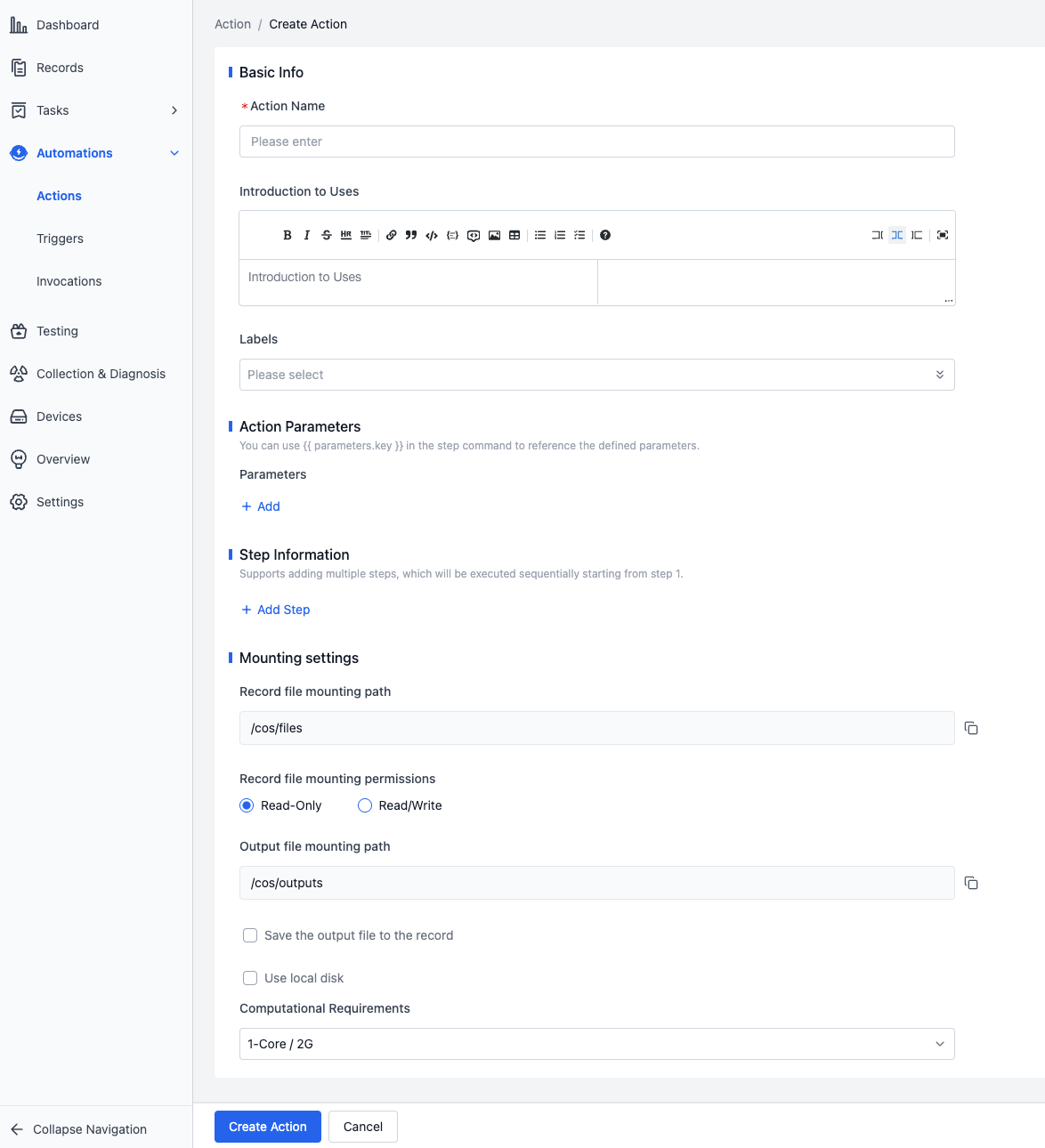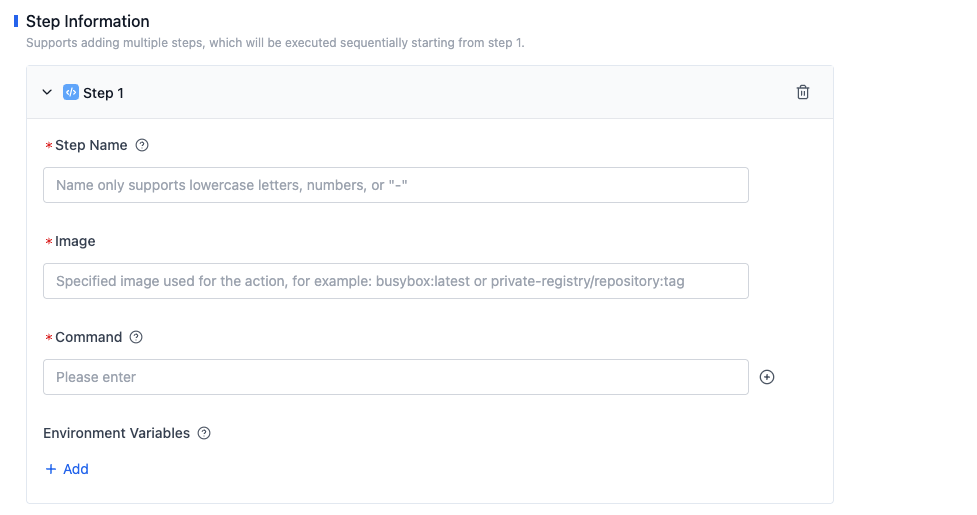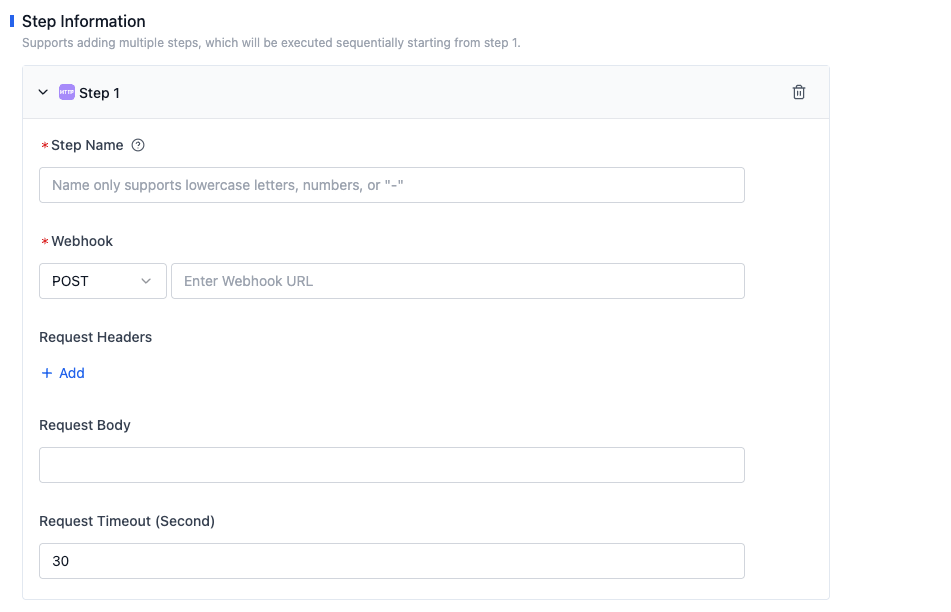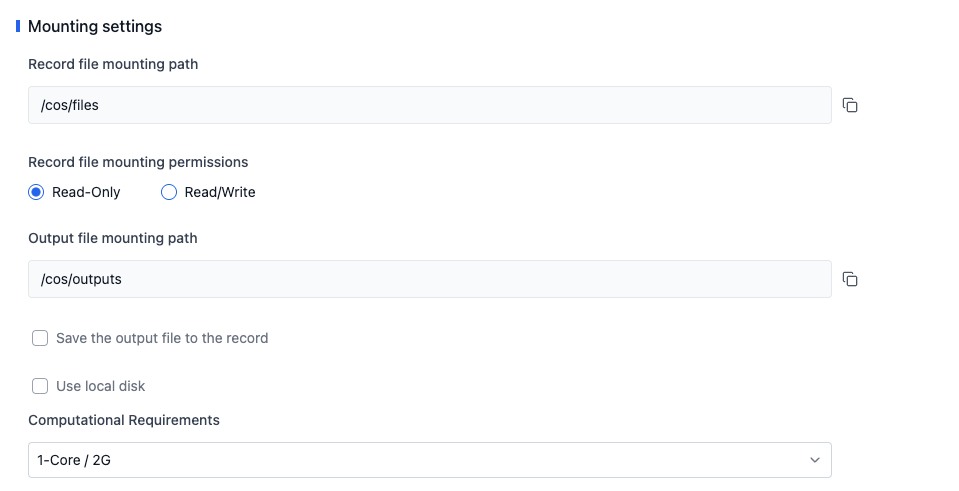About Actions
Actions are the fundamental building blocks of automated workflows, representing a specific task. With actions, you can perform a series of data processing operations, including data cleaning, preprocessing, training, and testing. By invoking the corresponding actions on records, you can complete the data processing workflow.

Basic Information of Actions

-
Action Name
Used to identify the specific function or purpose of an action.
-
Introduction
Provides a detailed description of the function and usage of an action to help users understand its role.
-
Labels
Used to classify or label actions for quick searching and filtering of relevant actions.
Action Parameters

Parameters consist of a Key and a Value. You can reference parameters in step commands using {{parameter.key}}.
For example, if the Key is input and the Value is hello world, you can reference the parameter in a step command using {{parameter.input}}.
Step Types and Information
An action can have multiple steps. The platform supports two types of steps: Image Code Execution and HTTP Request.
- The "Image Code Execution" step executes custom code logic in a specified image environment.
- The "HTTP Request" step sends an HTTP request to a specified URL and retrieves the response.

Image Code Execution

-
Step Name
Used to identify the specific function of a step.
-
Image
The image serves as the execution environment for an action, integrating all the dependencies and tools required to run the action. Currently, the following two image operation methods are supported:
- Custom Image: Upload a custom image to the platform and use the corresponding image address. For detailed operation instructions, please refer to Images.
- Public Image: Use a publicly accessible image address, such as various open images on Docker Hub.
-
Command
Defines the command information to be executed after the image is run. Please modify it according to the actual requirements of your custom image. Note that commands and related parameters should be on separate lines.
For example, the command
ls -alneeds to be split into two lines as follows:ls
-al -
Environment Variables
Define environment variables in an action for the program to read and use during runtime.
When defining environment variables, avoid using names preset by the platform to prevent unexpected errors in the program. The platform's preset environment variables are as follows:
Environment Variable Name Value Description COS_FILE_VOLUME/cos/filesMount directory for records COS_CODE_VOLUME/cos/codesMount directory for code COS_BIN_VOLUME/cos/binsMount directory for binary files COS_BUNDLE_VOLUME/cos/bundlesMount directory for test programs in batch testing COS_ARTIFACT_VOLUME/cos/artifactsArtifact directory for batch testing COS_OUTPUT_VOLUME/cos/outputsOutput file directory for batch testing COS_ORG_IDOrganization ID COS_USER_IDUser ID COS_WAREHOUSE_IDWarehouse ID COS_PROJECT_IDProject ID COS_RECORD_IDRecord ID Some of the above environment variables have empty values, which are optional. If they exist, their values are in UUID format; if not, they are empty.
HTTP Request

-
Step Name
Used to identify the specific function of a step.
-
Webhook
Set the request method and request URL.
-
Request Headers
Set the request header information, allowing multiple key-value pairs to be entered.
-
Request Body
Set the request body information.
-
Request Timeout
Set the request timeout period, with a default of 30 seconds.
Mounting Settings

-
Record File Mount Path
When invoking an action, the system mounts records to the
/cos/filesdirectory in the image, allowing users to operate on the records within the image. -
Record File Mount Permissions
Define the access permissions of the image to record files. Currently, two types of permissions are supported:
- Read-only: The image can only read record files and cannot modify them.
- Read-write: The image can read and modify record files.
-
Output File Mount Path
When invoking an action, you can save the files to be output to the
/cos/outputsdirectory, which is the output directory for a single invocation. -
Save Output Files to Record
Define whether to save the files output to the
/cos/outputsdirectory to the record.- Add to Original Record: Upload the files output to the
/cos/outputsdirectory to the record. If there are files with the same name, you can choose to overwrite or keep the existing files. - Overwrite Original Record: Delete the files in the original record and upload the files output to the
/cos/outputsdirectory to the record.
- Add to Original Record: Upload the files output to the
-
Use Local Disk
The local disk is a local hard drive device on the physical machine where the instance is located, offering the advantages of low latency, high random IOPS, and high throughput. Define the mount path of the local disk, allowing users to operate on the local disk within the image.
-
Computing Requirements
Define the computing resource requirements for an action, including CPU and memory. 1 core represents a maximum of 1 virtual core of CPU usage, and 2G represents a maximum of 2GB of memory usage. If the program uses more computing resources than configured, it may be terminated by the system. Please estimate your resource usage and configure reasonable computing requirements.
The action provides four default configurations: 1 core/2GB, 2 cores/4GB, 4 cores/8GB, and 8 cores/16GB. If you have higher requirements, please contact us.